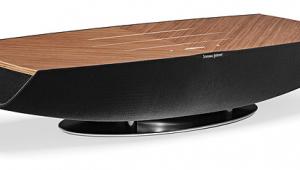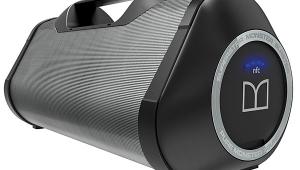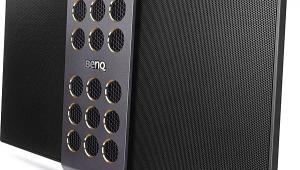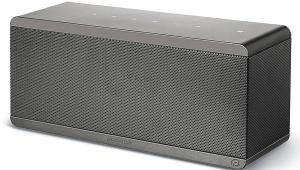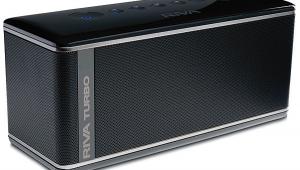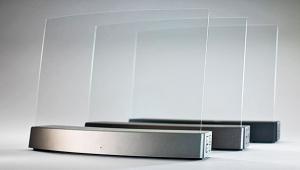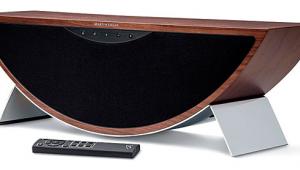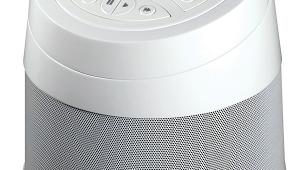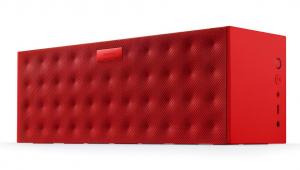Simple Sound: Klipsch The One II Wireless Speaker
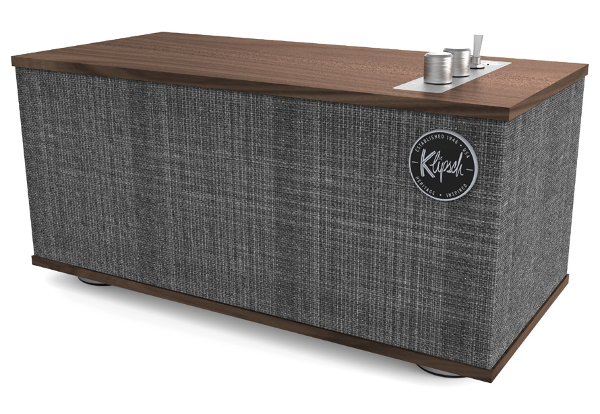
AT A GLANCE
Plus
Elegant retro design
Excellent sound
Minus
No remote control
No internet radio or app
No multiroom capability
THE VERDICT
The One II is a smaller, streamlined follow-up to Klipsch’s excellent Three wireless speaker that sounds as good as it looks.
Speakers don’t sit idle at Klipsch. The company is always looking for ways to evolve its products. Case in point is the new One II wireless speaker, a scaled-down follow-up to the excellent Three wireless speaker we reviewed a couple years ago.
The One II (not to be confused with its battery-powered predecessor, The One) is every bit as stylish as its big brother, with its solid walnut top (also available in matte black) and retro-inspired wrap-around fabric grille. Slightly smaller than The Three, the One II uses the same primary speakers — a pair of 2.25-inch “full-range” drivers — but teams them with a smaller 4.5-inch woofer and smaller passive radiators (one at either end).
Simplicity is king with this speaker. You can stream music wirelessly via Bluetooth or use its lone Aux input to jack in a CD player, PC, or other source component. That’s it. There’s no app, no Wi-Fi connectivity, and no multiroom capabilities. And apart from an on/off toggle switch, there are exactly two controls — one to adjust volume and one to select inputs (Bluetooth or Aux). Pressing and holding the Source knob for 3 seconds puts the speaker in pairing mode; holding it for 10 seconds clears the history and resets the speaker.
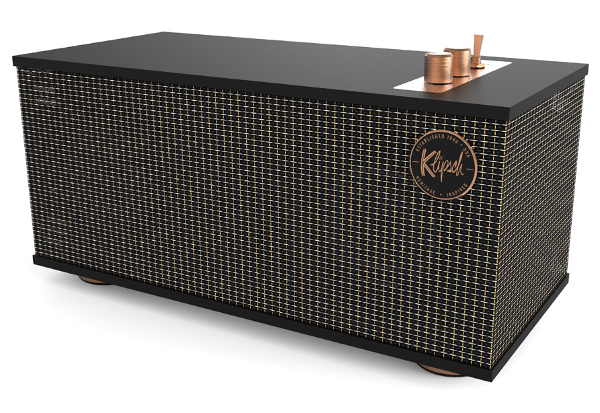
I set up The One II on a cabinet in my 12 x 12-foot home office and stood back for a moment to admire its tasteful presence. Man, it looks good. I selected “Klipsch The One II” in my phone’s Bluetooth menu and fired up Pandora. I could tell right away that The One put out sound to match its looks. Even so, I let it play for a few days before spending time really listening, having learned though experience that a distinct improvement in sound quality is possible after a speaker has had a chance to break in.
My session started with a little laid back listening on Pandora and Amazon Music to get acquainted with The One. Overall, the sound was full and well defined with some sibilance (having more to do with file quality than anything else), though mostly confined to the area immediately surrounding the speaker. Tracks like John Mayer’s “Love on the Weekend” (The Search for Everything) with its reverb-washed guitar or the live version of “Do You Feel Like We Do” from Peter Frampton’s landmark 1976 album Frampton Comes Alive produced a more spacious footprint.
“Round Here,” from the Country Crows 1994 debut August and Everything After sounded particularly good. Adam Duritz’s plaintive vocals, punctuated by the powerful snap of the snare drum, were out front and clear and the bass was strong for such a small speaker. Even the keyboard, which is buried in the mix, made its presence known alongside the guitar, whether its strings were being picked or strummed.
On newer pop tracks like the Ed Sheeran/Justin Bieber duet “I Don’t Care” (No. 6 Collaborations Project) and Imagine Dragons’ “Natural” (Origins) the bass was unexpectedly robust. Ditto for NF’s hip-hop-infused “Time” (The Search), not to mention Giles Martin’s 50th anniversary remix of “Come Together” from The Beatles’ enduring classic Abbey Road, as heard in 24-bit/96-kHz resolution through the Cambridge Audio DacMagic XS USB digital-to-analog converter (DAC) connected to my laptop.
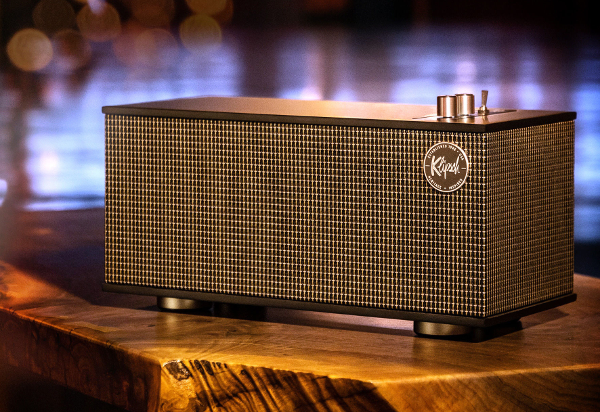
Settling in for an impromptu album party, I let The Beatles’ masterpiece roll top to bottom and liked what I heard. Paul McCartney’s melodic bass was sumptuous throughout, thanks in part to Martin’s remix, and the album’s characteristic dense, multi-faceted mix sounded clean and detailed, if not a tad bright. George Harrison’s signature guitar picking on “Here Comes the Sun” was “in the room” and the luxurious vocal harmonies on John Lennon’s “Because” and “Sun King” were heavenly — all this from a speaker no bigger than a shoe box.
I moved the speaker around the house to gauge its volume potential, which should be more than adequate in all but the largest spaces. In my office and (12 x 18-foot) kitchen it played loud before distortion ruined the party (about three-quarters volume). And even though The One couldn’t quite fill my 13 x 25-foot living room (would you really expect it to?), it was plenty loud for casual listening and would be a great provider of background music during a lively house party.
If your needs are simple and all you want to do is stream music on demand from your phone (or other Bluetooth-capable device) and maybe hook up a CD player, The One II will get the job done and is a reasonably good value. If, on the other hand, you crave bigger bass and are willing to pay more for a phono input (The Three II, $459) or direct onboard access to streaming services, voice/app-based control, and multiroom capability (The Three with Google Assistant, $574), give one of its big brothers a try.

